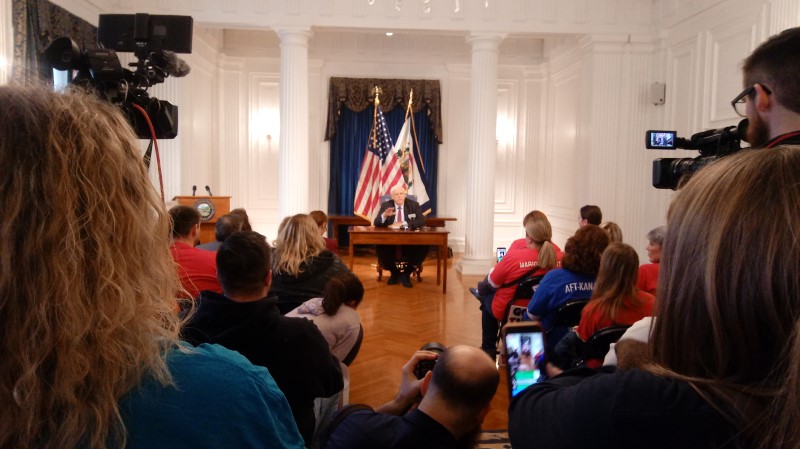

Share
The wave of school strikes that started in West Virginia a year ago seems to be moving more funding into public education, nationally.
According to a report by the American Federation of Teachers, average K-12 funding stalled or fell between 2008 and last year.
Economist Sylvia Allegretto has studied the issue as co-chair of the Center on Wage and Employment Dynamics at the University of California-Berkeley.
She said average pay for teachers actually dropped slightly in that time, and now is nearly 20 percent below what similar college graduates make. She noted the states that followed West Virginia in having statewide strikes last year had some of the widest pay differentials.
“They have some of the worst pay gaps in the country,” Allegretto said. “For instance, Arizona, North Carolina, Oklahoma, Colorado – all states that ‘walked out’ – have teacher pay gaps that are over 30 percent.”
School employees across seven states and in Los Angeles walked off the job last year. Five of those strikes resulted in large increases in pay and public-school funding. Issues in two are still unsettled.
The AFT said employees in more than a dozen other, individual school districts have walked out, and that many of those cases also led to more money for schools. But the trend toward increases in public-education funding seems to be driven in part by improving state and local budgets.
Gov. Jim Justice confirmed that West Virginia is making school employees’ pay and health insurance a bigger priority now that state revenue is finally rising after years of red ink.
“I think people should look at education as an economic driver, and we should genuinely invest in education,” the governor said. “At the end of the day, nationally, we’ve slipped and slipped and slipped.”
A two-day strike this week by West Virginia teachers and school employees looks likely to ensure that little of the state’s additional education funding this year will go to private programs like charter schools.
Allegretto said that’s also part of the national pattern for these labor actions, which tend to focus on a lot more than pay.
She listed a few examples: “Crumbling buildings, outdated books, class sizes that are too large, inadequate staffing and wraparound services. It’s not just teacher pay. And one of the largest issues is the idea of publicly-funded charter schools.”

